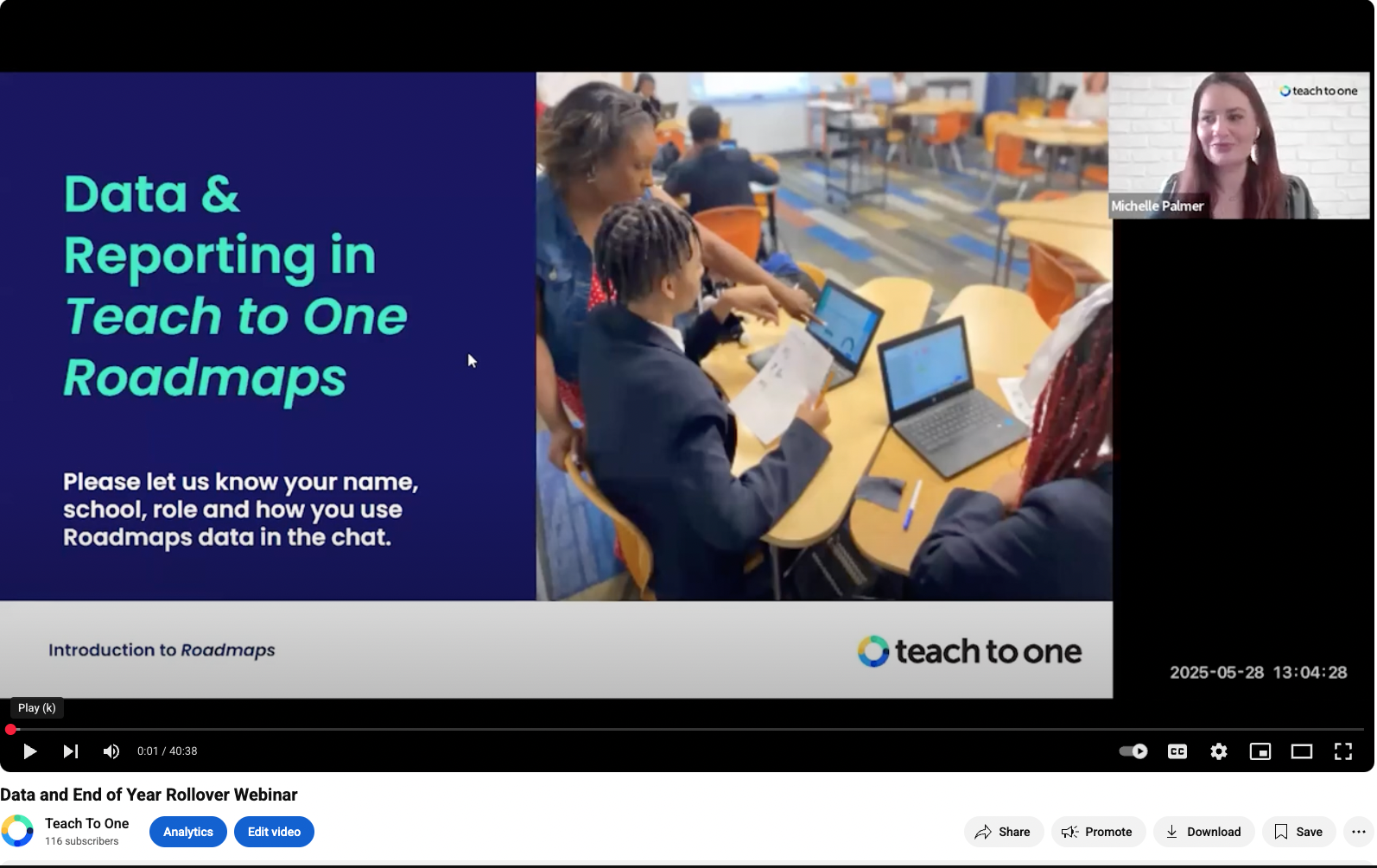Mildred Osborne’s Executive Director on the elements that factor into success
March 05, 2020
By Teach to One

How would you describe your student population?
Since each school in New Orleans Parish is a charter school, our student population changes every year. Although our school is in an established middle-class neighborhood, students come from every part of the city, and the vast majority are economically disadvantaged. We have a reputation for meeting the needs of exceptional education and ELL students, so these populations have grown in the past year. We have also seen increases in the number of students that are new to the country.
What is a common, but inaccurate, assumption made about Mildred Osborne?
The letter grade that we are assigned by the State gives the impression that our school isn’t preparing students for success. However, our school has received top growth results for several years in both language arts and math. At times, it is difficult for our staff to see that we have shown continuous improvement because we haven’t seen the school grade increase. But our kids are learning and growing due to their hard work and the work of our teachers.

How would you describe the process of aligning school staff behind Teach to One? How have staff perspectives changed over time?
It took some time for our teachers to fully recognize what Teach to One 360 could solve for, that it could provide both intervention and extension for students. However, as we have seen positive data from both MAP and Playlist demos (PLD), teacher buy-in has increased. By incentivizing positive PLD results, students are more motivated to perform well on them.
What have parents said about Teach to One?
At our family math night, the parents were impressed by how individualized the program was. One parent said she couldn’t believe that each student has their own learning path designed just for them. She went on to say that she wished she had help like this so that she could have been better at math.
What does it feel like when you walk into your Teach to One classrooms? What would a visitor take away from the experience?
We have definitely received comments from visitors who are impressed with the level of autonomy that students have shown within the various modalities—when in Peer to Peer or Small Group collaborations, how students stay on topic and actually talk about math. We also get comments about how the whole staff works together so well in running the program.
Where has Teach to One most surprised you?
One, how well the skills build on what they are learning in the Tier 1/Core curriculum. Since Teach to One 360 at Osborne is a supplemental program, we weren’t sure about teaching two math programs, but they have complemented each other well. There has been a positive change in student attitude and motivation. Students who are bought in are showing great results. Tier 2 students are meeting growth projections.
Two, the way in which teachers have come together to support the rollout. This has not been done by math teachers only, but by many non-math teachers who have embraced the program and put in the work to make Teach to One 360 effective.
And three, how many elements factor into success: use of space, human capital, professional learning time, coaching and feedback, technology, and instructional leadership. It is complex and layered, which does make it different than other intervention models and programs. Until you are living it and breathing it, you don’t realize the complexity of it all and how it all weaves together to make a successful experience for students.
Latest Posts

Recording: Data and End of Year Rollover Webinar
In this 45-minute webinar recording, Michelle Palmer, Senior Director of Customer Success, and Liat Greenspan, Associate Director of Program Success, explain how to assign a skill or pathway, use the Teacher Dashboard to identify struggling students, leverage the Reports Hub for weekly planning, and monitor growth and engagement on the Progress Page.

Getting Students Engaged in Math at Valley Charter
Students arrive at their assigned seats equipped with laptops and individualized Teach to One Roadmaps packets, which include a work time poster, a note-taking sheet, and graph paper.

Webinar Recording: Unlocking Algebra
On Tuesday, May 13, TNTP and New Classrooms released the report: Unlocking Algebra – What the Data Tells Us About Helping Students Catch Up. On the same day Adam Meier, Partner, Research Center of Excellence, TNTP, and Joel Rose, Co-founder and Chief Executive Officer, New Classrooms, presented the findings, recorded in the webinar below. Looking […]